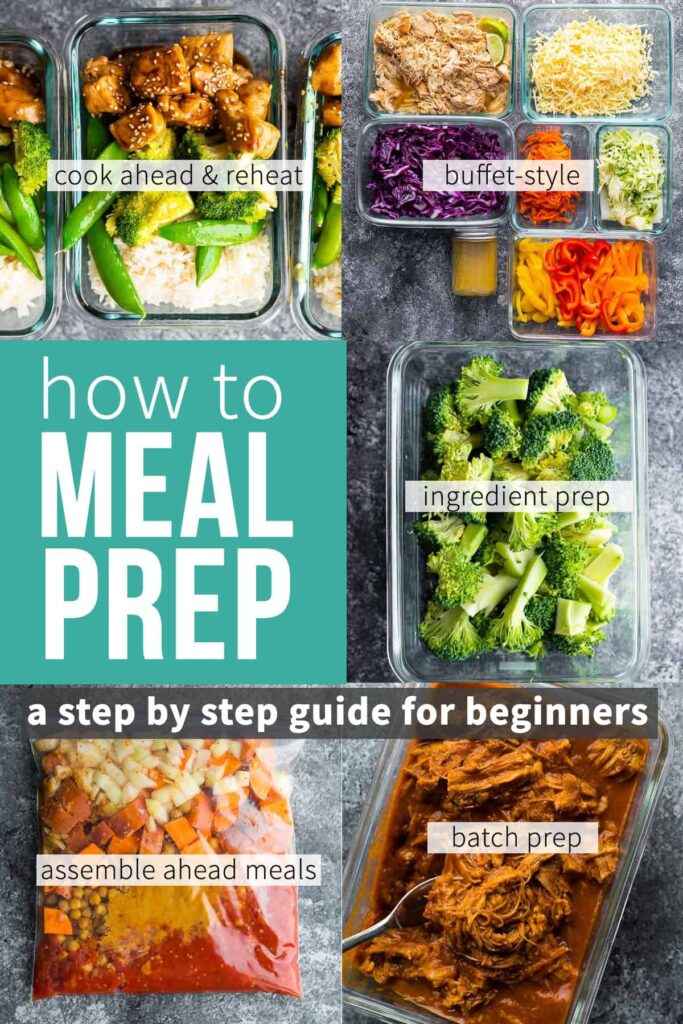Meal planning is essential for maintaining a healthy lifestyle and can save time and money by reducing food waste and eliminating last-minute grocery store trips. Follow a step-by-step guide to meal planning by setting goals, choosing meal planning tools, getting inspiration and planning meals, making a grocery list, and prepping food. Tips include utilizing leftovers and planning for flex meals, including variety in meals, shopping for seasonal produce, sticking to a list, cooking in batches, and labeling prepped meals for easy access. With the right tools and approach, meal planning can become an easy and enjoyable process.
Meal Planning Made Easy: A Step-by-Step Guide to Planning Your Weekly Menu
Why Meal Planning is Important
Meal planning is an essential part of maintaining a healthy lifestyle. When you plan your meals in advance, you can ensure that you are eating a balanced diet that provides the necessary nutrients your body needs. Meal planning can also save you time and money by reducing food waste and eliminating the need for last-minute trips to the grocery store.
Step-by-Step Guide to Meal Planning
Step 1: Set Your Goals
Before you start meal planning, determine your goals. Do you want to lose weight, gain muscle, or maintain your current weight? Having a clear goal in mind will help you plan meals that meet your needs.
Step 2: Choose Your Meal Planning Tool(s)
There are plenty of meal planning tools available to help you stay organized. Some popular options are using a physical planner, a printable meal planning template, or a digital meal planning app. Whatever tool you choose, make sure it fits your preferences and lifestyle.
Step 3: Get Inspiration and Plan Your Meals
Consider your goal and customize your meal plan accordingly. Browse through cookbooks, Pinterest, websites, or blogs for new recipe ideas. Start with breakfast, lunch, and dinner for the week, and then add snacks and desserts if you desire.
Tip 1. Don’t forget leftovers:
Utilize your leftovers for lunches or dinners later in the week.
Tip 2. Plan for flex meals:
Flex meals are meals that deviate from your meal plan. Plan for a few if you have special events or social gatherings coming up.
Tip 3. Include variety:
Eating the same meals week after week can get boring. Incorporate a variety of flavors, cuisines, and ingredients into your meal plan to keep things interesting.
Step 4: Make a Grocery List
After planning your meals, create a list of ingredients needed for the week. Check your pantry and fridge for items you already have to prevent overbuying. Try to group items together by category when making your list, which will save you time in the grocery store.
Tip 4. Shop for produce in season:
Seasonal produce is often cheaper and fresher than out-of-season produce.
Tip 5. Stick to your list:
Avoid purchasing extra items that aren’t necessary.
Step 5: Prep Your Food
After grocery shopping, it’s time to prep your meals. Set aside time to prepare ingredients ahead of time to make cooking throughout the week easier. Wash and chop produce, pre-cook proteins, and make dressings or sauces in advance.
Tip 6. Cook in batches:
Cooking meals in large quantities can save time and money.
Tip 7. Label:
Labeling prepped meals can help you stay organized and make it easier to grab what you need when you are in a hurry.
Conclusion
Meal planning can feel daunting, but with the right tools and approach, it can become an easy and enjoyable process. By following these simple steps and incorporating the given tips, you can create a meal plan that meets your needs and fits your lifestyle.
